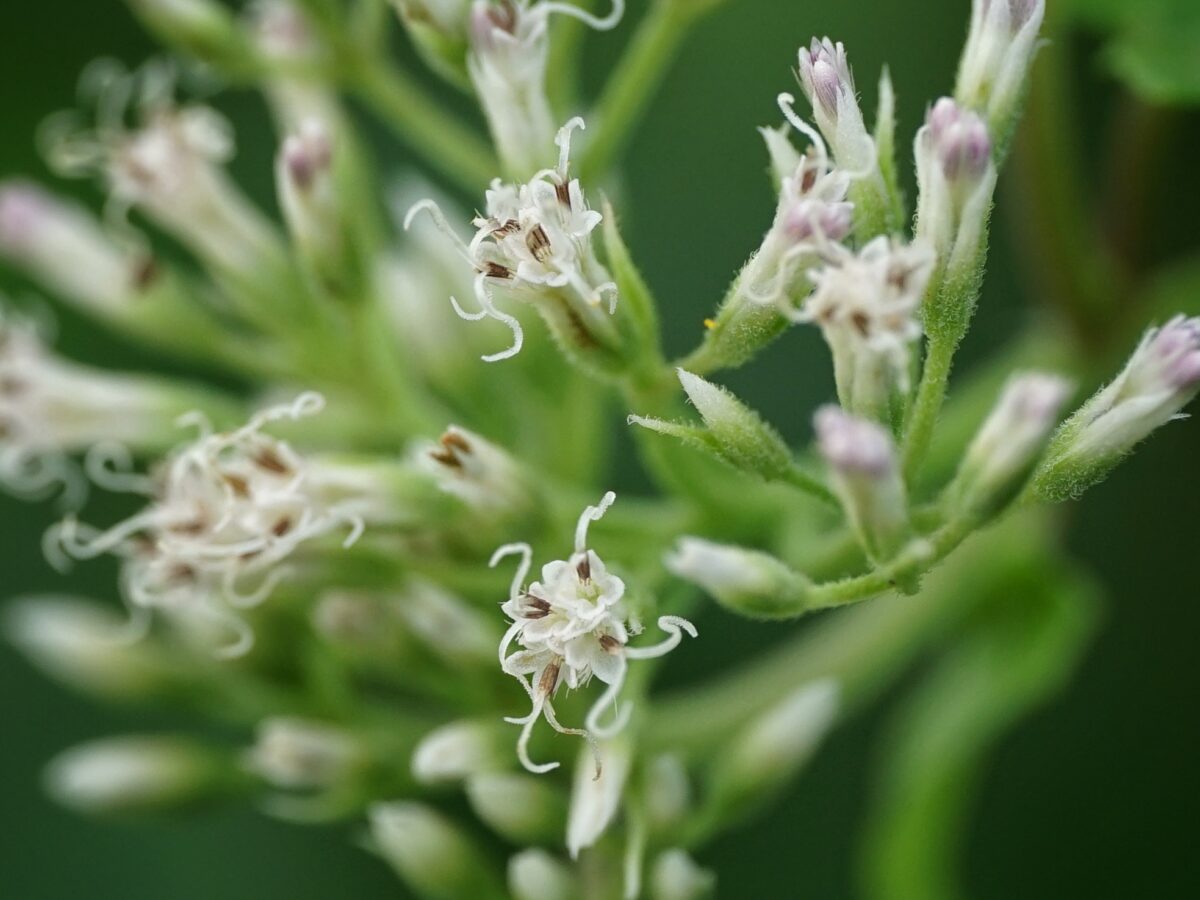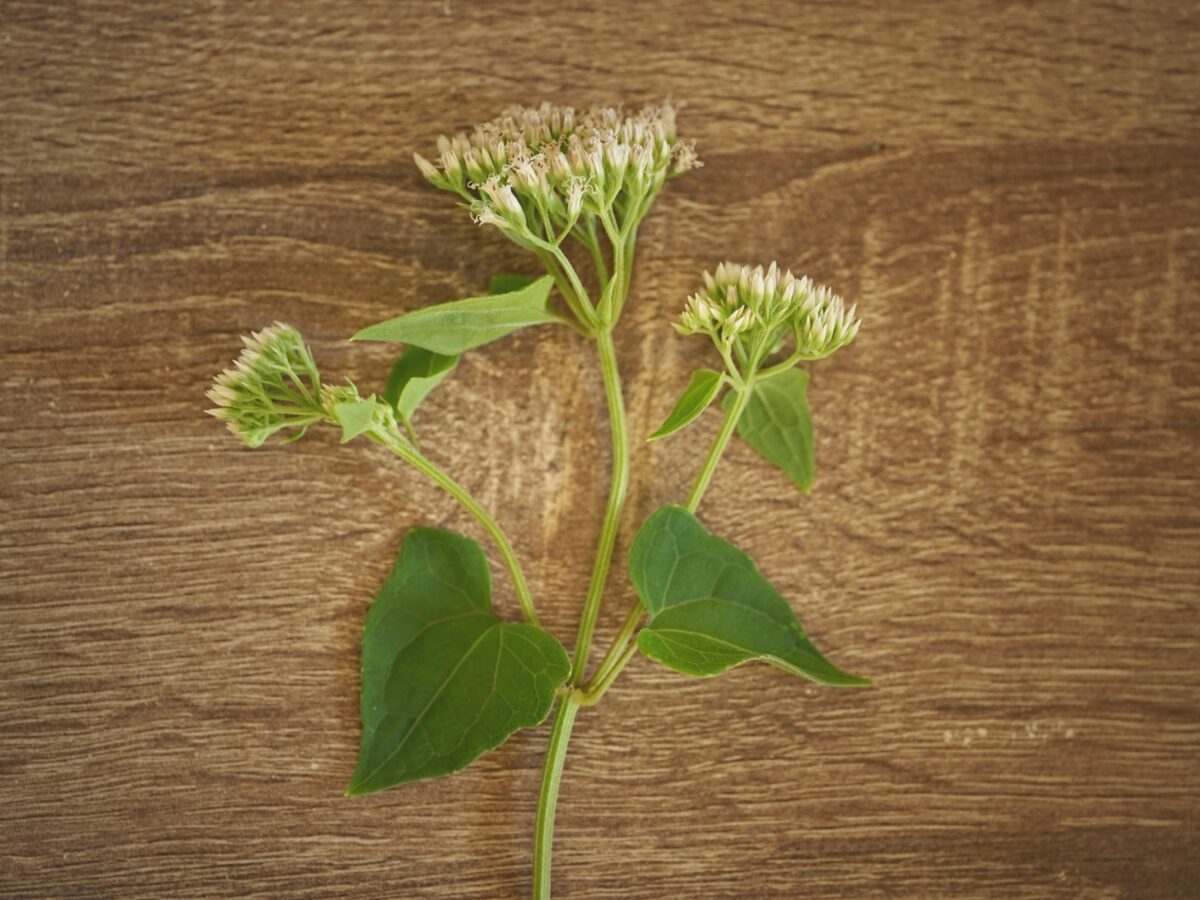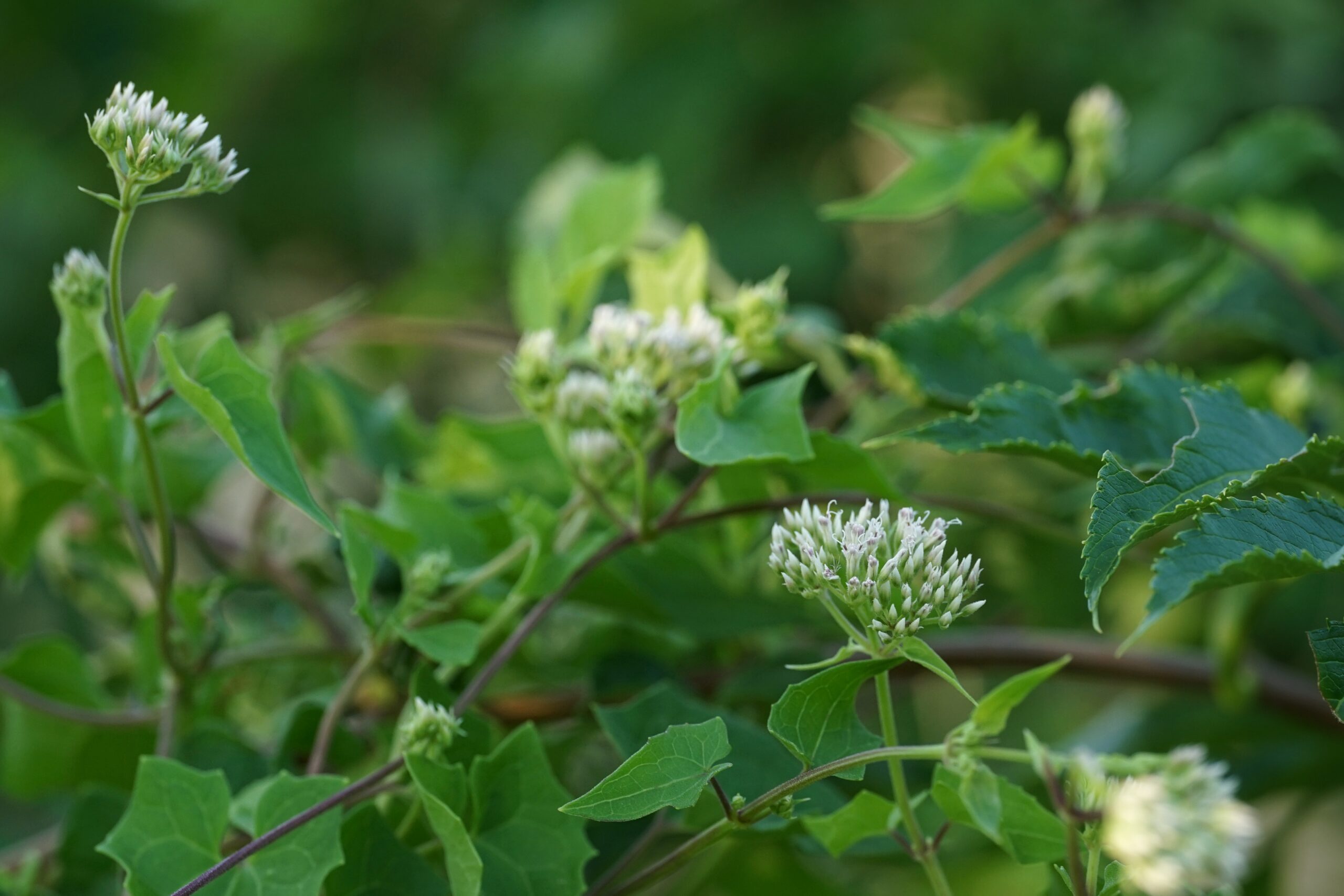Climbing hempvine
Pictured above: Climbing hempvine (Mikania scandens) by Emily Bell. Click on terms for botanical definitions. View post as a PDF.
Climbing hempvine (Mikania scandens) is a lovely herbaceous vine that can be found rambling among low-growing vegetation along the edges of wet forests, prairies and marshes. It packs some powerful wildlife value as a larval host for the Little metalmark butterfly, nectar source for a diversity of pollinators, and nutritious forage for herbivorous mammals.
Its flowerheads are only about .5 cm long, enclosed in narrow phyllaries and clustered in panicles. Flower coloration ranges from creamy white to light pink and purplish. The branching stems can be glabrous to densely pilose. Leaves grow from swollen nodes on the stem and are oppositely arranged. They are triangular to heart-shaped, have minutely pubescent faces, and may have toothed margins. The fruit is a dark, resinous achene with a pappus of white or purplish bristles.


Climbing hempvine has been used in agricultural settings as a cover crop and livestock fodder. Indigenous people have used it medicinally to treat snake and insect bites and other wounds.
Due to their similar appearances, there has been taxonomic confusion between Climbing hempvine, which is native to the Eastern US, and the non-native, federally and state-listed noxious weed Mikania micrantha. This invasive plant has so far only been identified from Miami-Dade County in the US, but is highly problematic in other parts of the world.
Family: Asteraceae (Aster, composite or daisy family)
Native range: Throughout Florida
To see where natural populations of Climbing hempvine have been vouchered, visit florida.plantatlas.usf.edu.
Hardiness zone: 8A–11B
Lifespan: Perennial
Soil: Wet to moist, moderately-drained sandy, limestone or organic soils
Exposure: Full sun
Growth habit: Low-growing vine
Propagation: Seed, cuttings
Garden tips: This plant is suitable for naturalistic gardens or restorations
While not readily available in commercial nurseries, climbing hempvine has been used in restoration and pollinator garden settings. Look for it in natural areas!

